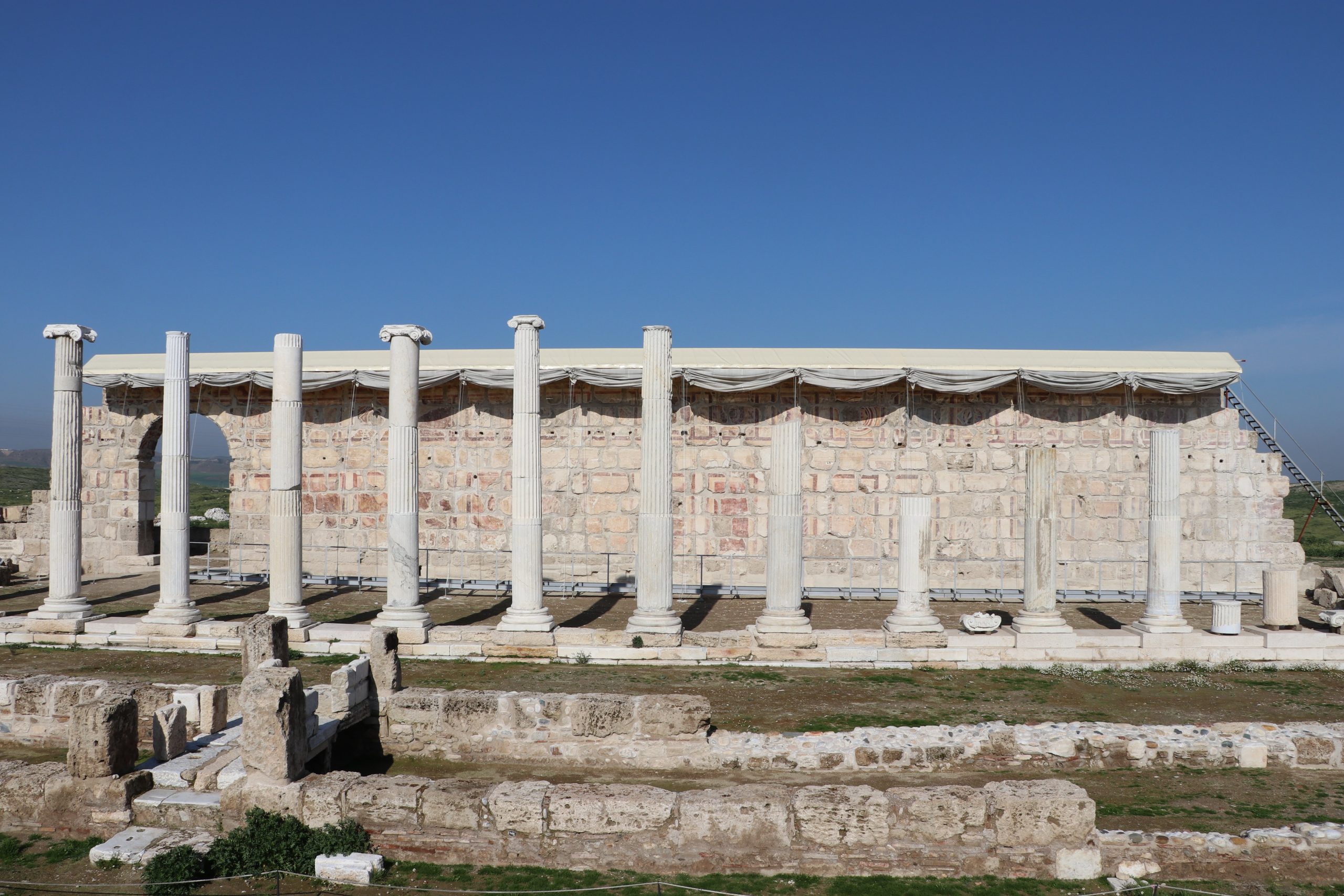In the ancient city of Laodicea, located in Turkey’s southwestern Denizli province, 1,750-year-old fresco travertine blocks, buried 7 meters underground by an earthquake in A.D. 494, have been re-erected.
Listed on UNESCO’s World Heritage temporary list and home to one of the seven churches mentioned in the Christian New Testament, excavations in the ancient city of Laodicea, which is also known as Laodicea on the Lycus, have been ongoing since 2003 under the supervision of archeologist Celal Şimşek from Pamukkale University in Denizli.
Featuring historical ruins dating back to 5500 B.C., Laodicea was one of the most important centers of trade, art and sports in ancient Anatolia, the heartland of modern Turkey, and attracts many tourists to the area.
In excavations two years ago, the fresco travertines were unearthed with special techniques. In addition, a recently recovered wall featuring panels showing painted Corinthian blocks, figure drawings and various depictions will soon be on display for visitors.
The excavation is among the most important archeological works in the world, Şimşek told Anadolu Agency (AA).
He said each recovered block and figure is listed and categorized, then prepared for display. “These legendary fresco travertines were preserved underground thanks to the debris that fell onto them after the earthquake,” he explained. “In terms of its width and its depictions, we believe this structure is one of a kind in the world. We recovered a wall spanning 52 meters and towering 9 meters high (170 by 30 feet). We plan to open it to visitors in April.”
Roman coins bearing the profile of Emperor Gallienus, who reigned in A.D. 253-268, were found in the excavations, he said. “These coins come from the third century, which proves that this wall and frescos date back to 1,750 years. This is the first time such a large wall was discovered. Among the other important walls are those from the palace at Crete and the city walls of Pompeii. But the biggest and most magnificent wall is here in Laodicea.”
People eager to see the ancient structure will contribute to Turkey’s economy and tourism, he added.
Last Updated on Mar 18, 2020 11:55 am










Discussion about this post